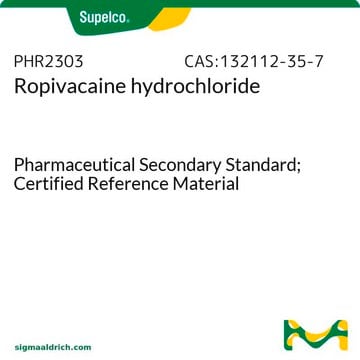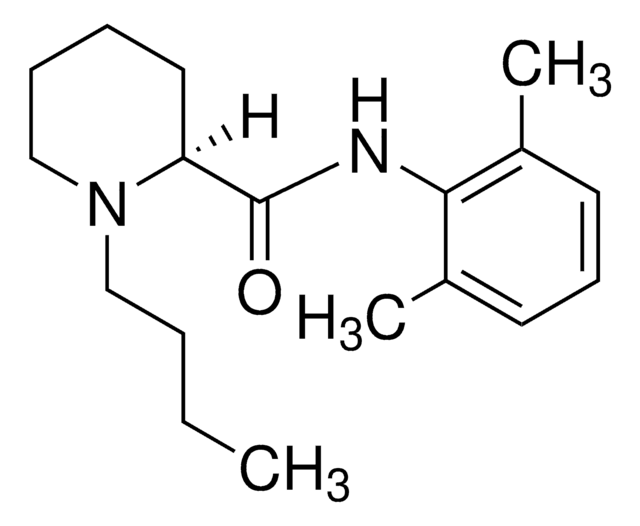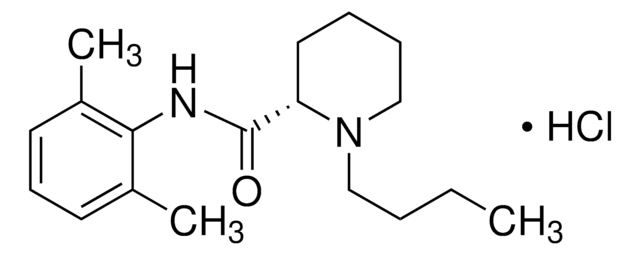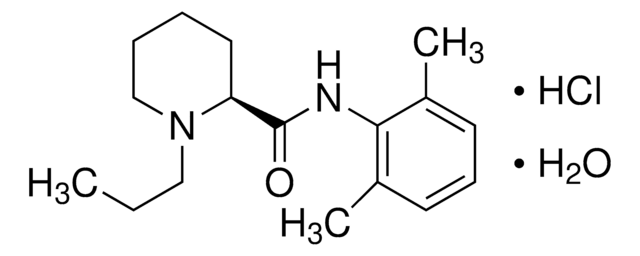PHR1128
Bupivacaine hydrochloride
Pharmaceutical Secondary Standard; Certified Reference Material
Synonym(s):
Bupivacaine hydrochloride monohydrate, 1-Butyl-N-(2,6-dimethylphenyl)-2-piperidinecarboxamide
About This Item
Recommended Products
grade
certified reference material
pharmaceutical secondary standard
Quality Level
Agency
traceable to BP 479
traceable to Ph. Eur. B1160000
traceable to USP 1078507
API family
bupivacaine
CofA
current certificate can be downloaded
technique(s)
HPLC: suitable
gas chromatography (GC): suitable
application(s)
pharmaceutical (small molecule)
format
neat
storage temp.
2-30°C
SMILES string
O.Cl.CCCCN1CCCCC1C(=O)Nc2c(C)cccc2C
InChI
1S/C18H28N2O.ClH.H2O/c1-4-5-12-20-13-7-6-11-16(20)18(21)19-17-14(2)9-8-10-15(17)3;;/h8-10,16H,4-7,11-13H2,1-3H3,(H,19,21);1H;1H2
InChI key
HUCIWBPMHXGLFM-UHFFFAOYSA-N
Looking for similar products? Visit Product Comparison Guide
General description
Application
Biochem/physiol Actions
Analysis Note
Other Notes
Footnote
Recommended products
related product
Signal Word
Danger
Hazard Statements
Precautionary Statements
Hazard Classifications
Acute Tox. 1 Inhalation - Acute Tox. 2 Dermal - Acute Tox. 2 Oral
Storage Class Code
6.1A - Combustible acute toxic Cat. 1 and 2 / very toxic hazardous materials
WGK
WGK 3
Flash Point(F)
Not applicable
Flash Point(C)
Not applicable
Choose from one of the most recent versions:
Already Own This Product?
Find documentation for the products that you have recently purchased in the Document Library.
Customers Also Viewed
Our team of scientists has experience in all areas of research including Life Science, Material Science, Chemical Synthesis, Chromatography, Analytical and many others.
Contact Technical Service













